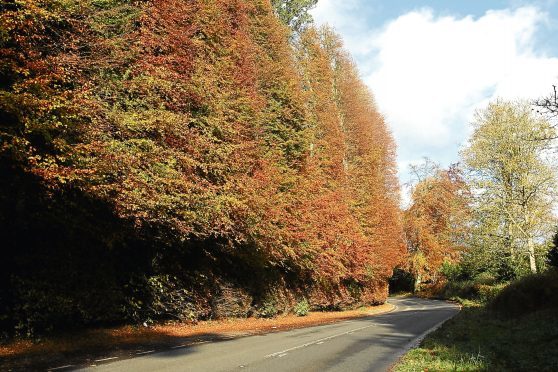Charles Edward Louis John Casimir Sylvester Severino Maria Stuart – a bit of a mouthful, but that was Bonnie Prince Charlie. I wonder how well he’d have got on in the playground – at least the one I remember – if his school mates had known his full name. But I doubt if the Wee Academy at Montrose was ever graced by royalty.
The Young Pretender, the Young Chevalier, Lady Carolina Nairne’s Charlie is my Darling – from the moment he unfurled his standard at Glenfinnan, at the head of Loch Shiel, his good looks, presence and charisma touched the hearts and patriotism of women of all ranks, young and old, who flocked to kiss his hand. Lady Nairne’s parents were strong Jacobite supporters and expressed their sympathy for Charles’ cause by naming their daughter Carolina (female equivalent of Charles) in his honour.
After the tragedy of Culloden he was the ‘Prince in the Heather’, the quarry of the greatest manhunt in history as he evaded the increasingly desperate efforts of the Hanoverian government troops to capture him. With the Jacobite cause convincingly lost, he escaped back to France and never set foot on his native soil again. From the security of distance, Jacobite sympathisers expressed their support for their absent monarch in toasts to the ‘King o’er the water’.
What brought on this outpouring of Jacobite sentiment was driving with the Doyenne to Blair Atholl and passing the Meikleour (pronounced McClure) Hedge which stands alongside the A93 road from Blairgowrie to Perth. At more than 100 feet tall and a third of a mile long, it holds the record in the Guinness Book of Records as the longest and highest hedge in the world.
Enduring devotion
Its story is that in 1745 Robert Murray Nairne and his wife, Jean Mercer of Meikleour, began to plant a beech hedge to mark a boundary on their estate. Robert – a staunch supporter of the prince – answered the call to arms and joined the prince’s column on the march to Inverness, leaving the planting unfinished. A year later Robert fell on Culloden’s bloody battlefield, and his grieving widow left the hedge to grow freely as a living monument to her husband’s memory.
Another landmark associated with the Bonnie Prince are the “Steekit Yetts” (Closed Gates) at Traquair House at Innerleithen, between Selkirk and Peebles, reputed to be Scotland’s oldest continuously-inhabited house. Forced to abandon his march on London to claim his throne, Prince Charlie made a tactical retreat back to Scotland and spent a night at Traquair.
Tradition says that the next morning he bade farewell to his hosts and marched down the main avenue from the house to continue his fateful journey to Inverness. He passed between two imposing gateposts each surmounted by a bear – hence the more popular name of the Bear Gates. As an act of defiance towards Hanoverian George II, the fervent Jacobite 5th Earl of Traquair locked the gates, vowing they should not reopen until a Stuart king once more sat upon the British throne. The yetts remain steekit yet.
There were bonnie fechters among the women, too, such as Lady Anne Mackintosh of Moy, wife of the clan chief. Theirs was a strange matrimonial arrangement – she was a staunch Jacobite, while he fought on the Government side. Colonel Anne, as she became known, raised the Mackintosh men to fight for the Prince. They led the charge at Culloden, suffering dreadful casualties.
In Lady Nairne’s poem The Women are a’ gane wud (mad – for Prince Charlie, of course), the second verse starts: “My wife now wears the cockade…”
Flower of Scotland
Legend has it that when the prince landed at Glenfinnan, he plucked a white Burnet rose and pinned it to his bonnet. Forever associated with the prince, the rose is regarded as the origin of the white cockade, or bonnet badge, worn for recognition by the Jacobite clansmen during the battle.
The 1745 Jacobite Rising was probably ill-fated from the outset – in part from the prince’s own wilfulness, but due also to him listening too much to poor advice and failing to recognise and heed good advice. It was the dénouement of Culloden that really did for him. The Highland charge of the clans was no match for Butcher Cumberland’s disciplined Hanoverian troops – it was clansmen fighting yesterday’s war against well-trained, well-armed, experienced troops.
Fugitive cave
Beyond the head of Glenesk, in Glen Mark, is secret Balnamoon’s Cave, with its romantic fugitive story. It was the refuge of Jacobite James Carnegy-Arbuthnott, the Rebel Laird of Balnamoon, or Bonnymoon, near Brechin. He was a captain in Lord Ogilvy’s Forfarshire regiment and survivor of Culloden’s bloodbath. Protected by the glen folk, for a year he escaped detection by the Redcoats combing the glen in search of him. He was finally betrayed by the local Presbyterian minister who, strangely, met an untimely death.
By sleight of clever legal argument Bonnymoon’s political transgressions were dismissed.
It’s all history now. Bonnie Prince Charlie would have been King Charles III, but there’s another prince in waiting.


